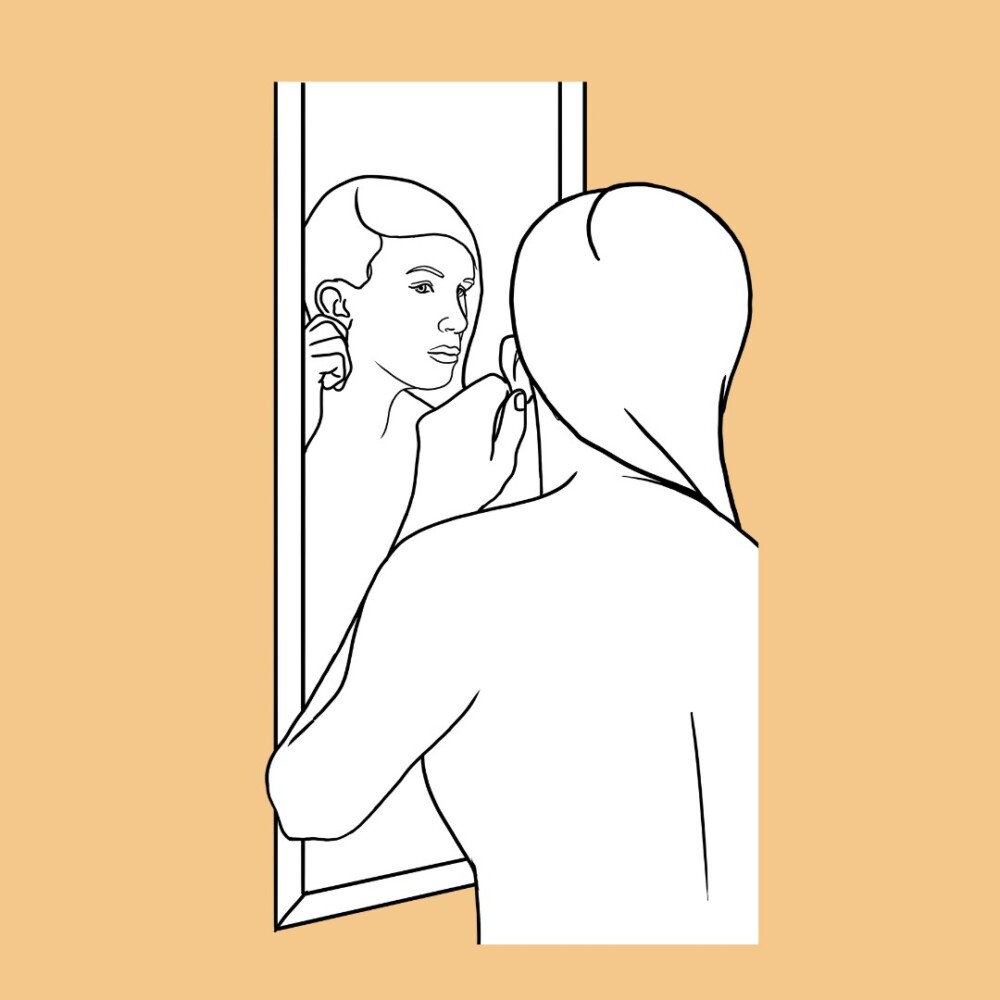
How Do I Check My Skin for Skin Cancer?
While prevention is crucial, the early detection of skin cancer holds equal importance. Regular skin examinations, including self-checks and professional evaluations by a dermatologist, are key in identifying skin cancer at an early stage, preventing it from growing or spreading further.
Below, we will provide you with a step-by-step guide on how to check your skin for skin cancer:
Perform Regular Skin Self-Examinations
Before starting regular head-to-toe self-exams, schedule a visit with a dermatologist for a comprehensive skin check. This will help establish a baseline for what’s “normal” on your skin, making it easier to spot any changes over time. The best time for a monthly self-exam is before a shower or bath. If possible, enlist a partner to help check hard-to-see areas like your back and scalp.
During your self-exam, carefully inspect your skin for unusual symptoms such as unexplained itching, bleeding, crusting, or new spots and lesions. If you notice anything concerning, don’t delay—schedule an appointment with a dermatologist right away.
Helpful Tips
- Choose a day that’s easy to remember: Select a consistent day, like the first day of the month, to perform your self-exam. This regularity helps you stay on track and ensures you don’t forget.
- Monitor the patterns of your skin: Pay close attention to the number, size, shape, and location of your moles, freckles, and blemishes. By noting these patterns, you will be better equipped to spot any changes as they occur. Tracking these changes will make it easier to detect potential issues before they become serious. Whenever possible, take clear photographs of your moles and any areas of concern to document any changes more effectively over time.
- Perform the exam consistently: Make it a habit to follow the steps outlined below at least once a month. Regular skin checks help ensure no area is missed and greatly improve the chances of detecting skin cancer in its early stages.
- Choose the right setting: Select a location with good lighting, such as a bathroom with natural light, and ensure you have access to a full-length mirror. Use a handheld mirror to inspect hard-to-see areas like your back, behind your ears, and the scalp.
- Use tools to assist you: A blow dryer is helpful for parting your hair and checking your scalp. A comfortable chair allows you to sit and inspect your legs and feet without straining, ensuring a thorough and relaxed exam.
By following these tips and sticking to a regular schedule, you can be more confident in catching early signs of skin cancer and ensuring your skin stays healthy.

1. Your Tools: You will need a full-length mirror, a hand-held mirror, a blow dryer, a chair to sit on, and a well-lighted area.

2. Your Face: Carefully examine your face, especially your nose, lips, mouth, and ears – front and back.

3. Your Scalp: Thoroughly examine the entire surface of your scalp, using a blow dryer and mirror to expose each section to view.

4. Your Front Torso: Facing the full-length mirror, inspect your neck, chest, and abdomen. Women: check the skin underneath each breast. Lift your arms and check the sides of your upper body as well.

5. Your Back Torso: Face away from the full-length mirror, holding the handheld mirror. Examine your back, your shoulders, the back of your neck, and any other area you could not see from the front. From there, continue down your body and examine your buttocks and the backs of your thighs.

6. Your Lower Body: Sit on a chair and scan your legs using the handheld mirror to look at the back of each leg. Check the tops and soles of your feet, making sure to check your toenails and between your toes. Use the handheld mirror to check your genitals and the insides of your thighs.
Know Your ABCDEs
When doing a self-check for melanoma, there are certain features you can look for in your spots and moles. Two methods you can use are the Ugly Duckling Rule and the ABCDEs of melanoma. The ABCDEs stand for:
- A for Asymmetry: One half of the mole doesn’t match the other half in shape.
- B for Border: Irregular, ragged, or blurred edges are signs to watch for.
- C for Color: A mole with multiple colors, including shades of brown, black, or even patches of red, white, or blue, may be concerning.
- D for Diameter: A mole larger than 6 millimeters (about the size of a pencil eraser) should be examined.
- E for Evolving: A mole or spot that changes in size, shape, or color over time.
To learn more about the ABCDEs of melanoma, click HERE>
By familiarizing yourself with these warning signs, you can detect potential melanoma early and seek medical advice promptly. Regularly monitoring your skin is an important step in protecting your health.
